Choosing the right binoculars can often seem daunting, especially with many options. But fear not; I’m here to simplify the process for you.
The key is understanding your specific needs and then matching those to the right pair of binoculars.
First, let’s talk about magnification and lens diameter, two crucial factors when choosing binoculars.
The former determines how close objects will appear, while the latter influences how much light enters your binoculars, meaning better visibility in low-light conditions.
Lastly, don’t forget about comfort and durability. You’ll likely be using these binoculars for extended periods, so they must feel good in your hands and can withstand whatever adventures lie ahead.
So whether you’re bird watching or star gazing, follow my guide below to help find the best binoculars suited for your needs!
Understanding Binocular Basics
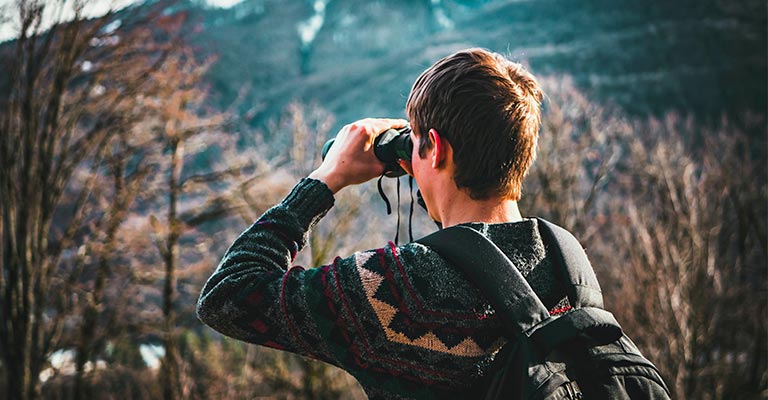
Binoculars can be a game-changer whether you’re an amateur bird watcher, a stargazer, or a hiking enthusiast. But if you’re new to binoculars, it can feel like stepping into a maze. I’m here to help clear up some of that confusion.
Let’s start with the numbers. What does it mean when you see something like 10×50 on binocular specifications? The first number (10 in this case) indicates the magnification power – how many times closer objects will appear compared to the naked eye.
The second number (50 here) is the diameter of objective lenses (closest to what you’re observing), measured in millimeters.
One thing that often gets overlooked is a field of view (FOV). This refers to how wide an area you can see through your binoculars at 1000 yards. A larger FOV allows for broader scenery but comes at a trade-off with less detail.
Now, onto prisms – they’re crucial components inside your binoculars that flip images right side up and left to right correctly as light passes through them.
There are two types: Porro prisms and roof prisms. Porro prism models are more affordable but bulkier than their roof prism counterparts.
Lastly, let’s touch on exit pupil size, calculated by dividing objective lens size by magnification power. For example, 7×35 binoculars would have an exit pupil size of 5mm (35/7).
In low-light conditions like dawn or dusk, when our pupils dilate up to about 7mm, having larger exit pupils can provide brighter images.
Remember these basics as we dive deeper into choosing your perfect pair!
Identifying Your Needs for a Binocular
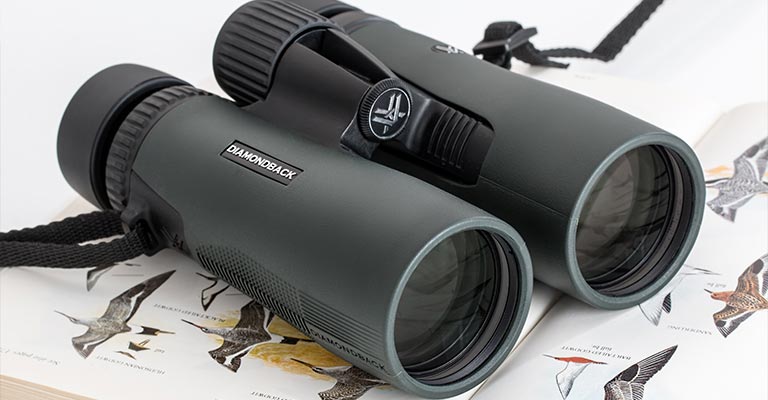
Before diving into the world of binoculars, it’s crucial to identify your specific needs. Are you an avid bird watcher? Maybe you’re a stargazer, or perhaps hunting is your game. Different activities require different features in a binocular.
Let me help break it down:
-
Bird Watching: If you’re into bird watching, look for binoculars with close focus and a wide field of view. You won’t need very high magnification – something between 7x and 10x should do just fine.
-
Stargazing: Higher magnification will be essential for those who love gazing at the stars. You’ll also want large objective lenses to allow more light in. A pair with specifications like 10×50 would be ideal here.
-
Hunting: If hunting is your main activity, durability, and waterproofing should be top priorities. As for specs, it depends on what you’re hunting and where – but anything from 8×40 to 10×50 could work well.
Of course, these are broad examples. The key takeaway is that identifying your needs will guide your decision-making when choosing a binocular.
It doesn’t matter if you’re an absolute beginner or an experienced user looking for an upgrade – understanding what YOU need from YOUR binoculars is the best starting point.
Remember, there’s no one-size-fits-all model for binoculars; instead, think about how you’ll mostly use them and choose accordingly!
Key Features to Consider When Buying Binoculars
When purchasing binoculars, selecting the right pair requires careful consideration of several key features to ensure they meet your specific needs. Here’s a detailed guide to the essential factors you should evaluate:
1. Magnification Power
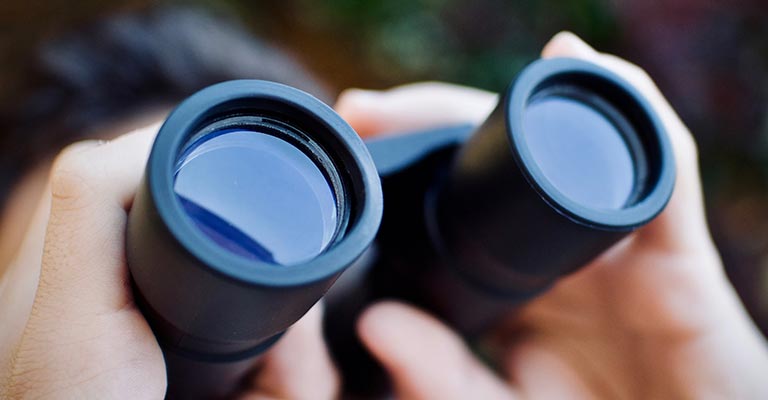
Magnification power is a critical aspect that defines how much closer the subject appears compared to the naked eye. For example, binoculars with a specification of 10×50 make objects appear ten times closer.
While higher magnification offers closer views, it can also make images less stable, potentially requiring a tripod for steady viewing.
2. Objective Lens Diameter
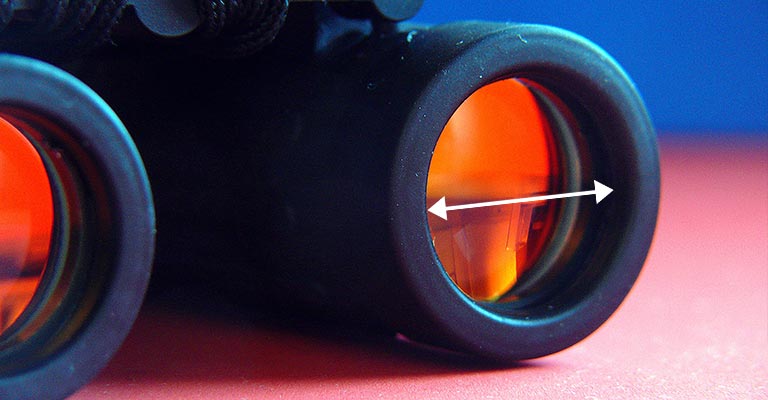
The objective lens diameter, indicated by the second number in specifications like 10×50, is crucial for light gathering. A larger diameter lens allows more light to enter, producing brighter images, which is particularly beneficial in low-light conditions such as dawn or dusk.
3. Field Of View (FOV)
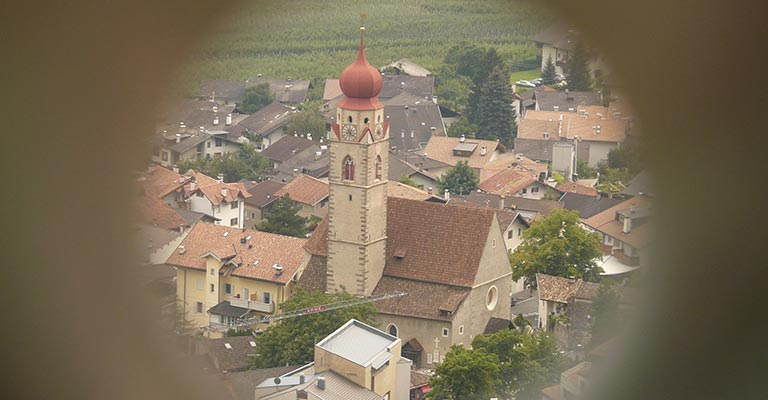
The field of view (FOV) determines the width of the area visible through the binoculars at a certain distance.
A wider FOV is advantageous for tracking fast-moving subjects or scanning large areas, making it an important feature for bird watching or attending sports events.
4. Prism Type
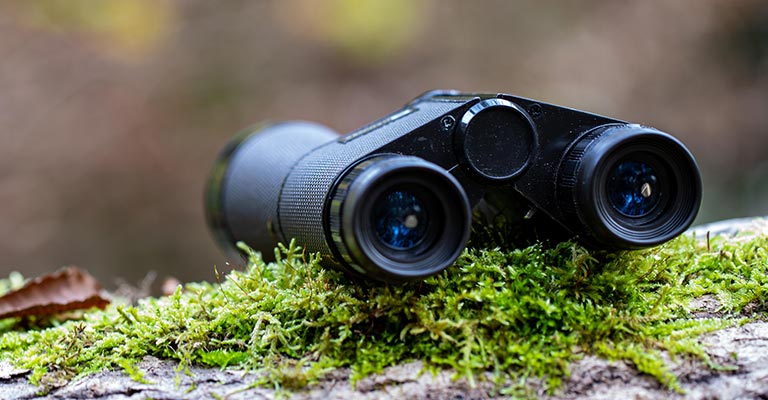
Binoculars typically use one of two prism types to correct the image orientation: roof prism or Porro prism.
Roof prism binoculars are more compact and lightweight but can be pricier. Porro prism binoculars, on the other hand, often provide better depth perception and wider FOV but are bulkier.
5. Durability and Water Resistance
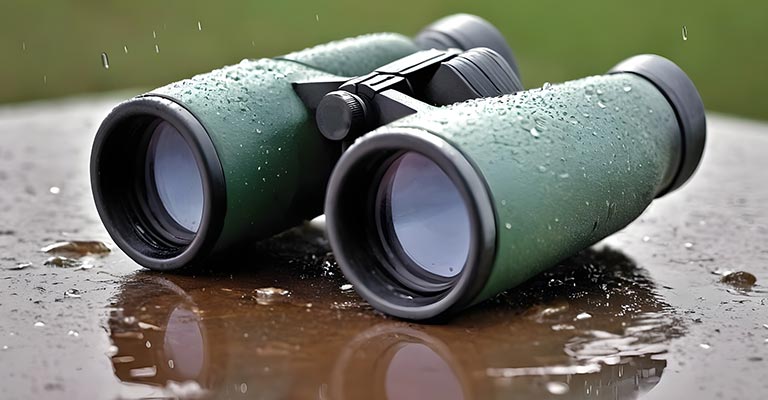
Binoculars’ durability and water resistance are significant for outdoor use, especially in rugged conditions. Look for models that offer waterproof and fog-proof features to ensure they can withstand adverse weather conditions.
6. Eye Relief
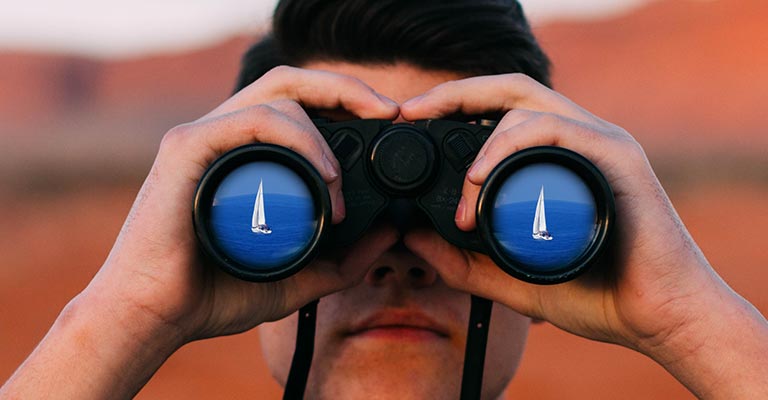
Eye relief is the distance from the eyepiece at which you can see the full FOV. Longer eye relief is essential for eyeglass wearers, allowing them to use binoculars comfortably without removing their glasses.
7. Focusing Mechanisms
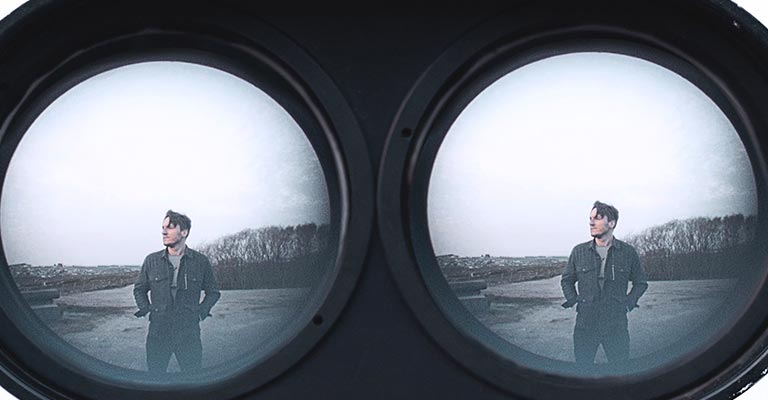
The focusing mechanism can vary between models, offering either a quick focus suitable for tracking moving subjects or a finer focus that allows for more detailed observation at a steady pace.
8. Weight
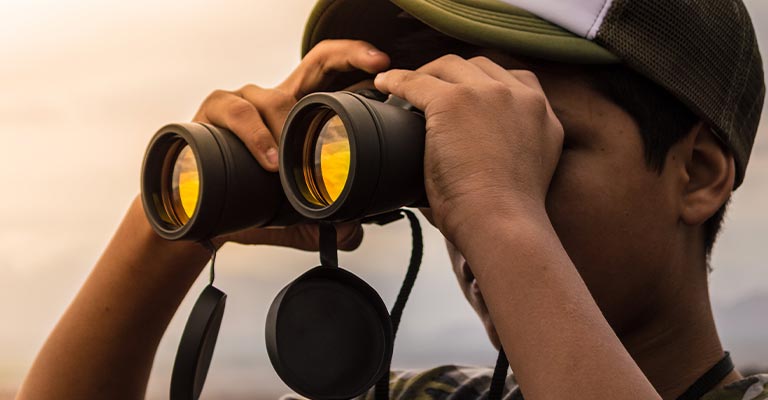
Considering the weight is essential, especially for extended periods of use. Lighter binoculars reduce the risk of arm fatigue, making them preferable for activities involving long observation periods or extensive travel.
Tips for Comparing and Testing Binoculars
Comparing and testing binoculars can be daunting, given the plethora of brands, models, and features available.
However, with the right approach and knowledge of what to look for, you can simplify this process and find the perfect pair that suits your needs. Here are some valuable tips for comparing and testing binoculars effectively:
1. Clarify Your Needs
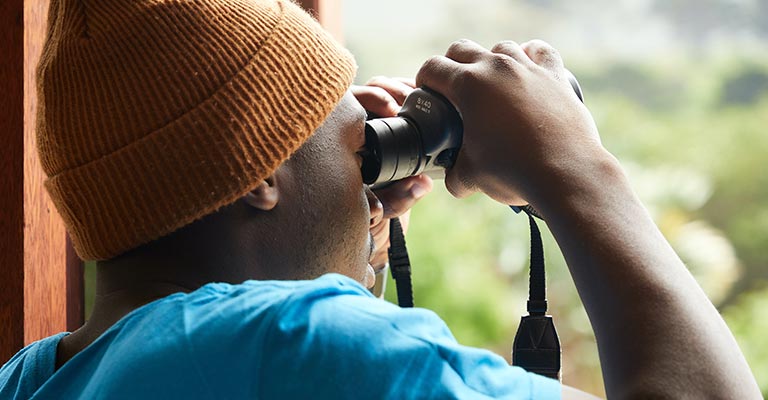
Understanding the primary purpose for which you intend to use the binoculars. Different activities such as bird watching, stargazing, hiking, or attending sporting events might require different specifications.
For example, bird watchers might prioritize binoculars with a wide field of view and quick focus, while stargazers may opt for those with higher magnification and larger objective lenses.
2. Understand Magnification Power and Lens Size
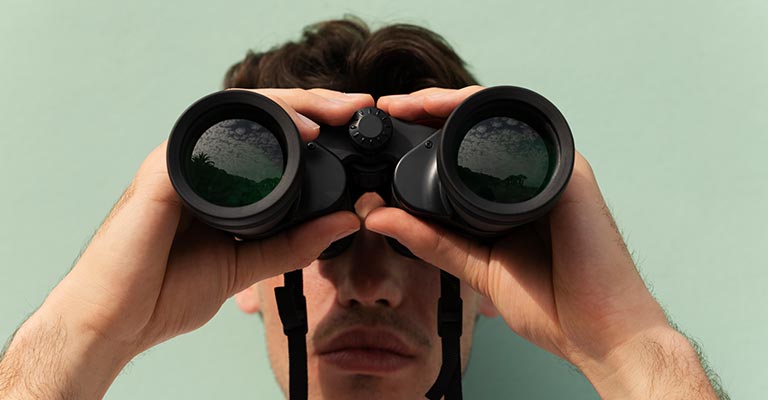
The specifications of binoculars, like 10×50 or 8×42, denote magnification power and the diameter of the objective lens, respectively.
While a higher magnification power offers closer views, it can also make the image shakier unless the binoculars are stabilized. The lens size affects light-gathering capability and the overall size and weight of the binoculars.
3. Consider Eye Relief
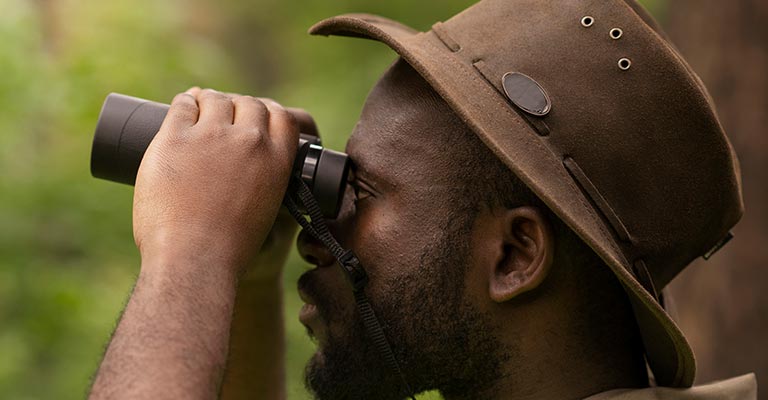
Eye relief is an important factor, especially for those who wear glasses. It indicates the distance you can hold the binoculars away from your eyes while still being able to see the entire field of view.
Look for binoculars with an eye relief of at least 11mm to ensure comfort and full visibility.
4. Examine Prism Types
Binoculars use Porro prisms or Roof prisms to correct the orientation of the viewed image. Porro prisms tend to provide a greater depth of perception and generally cost less but result in bulkier binoculars.
Roof prisms offer a more streamlined, compact design, which might be preferable for some users despite typically being more expensive.
5. Evaluate Build Quality and Additional Features
Consider the overall build quality, durability, and additional features such as water resistance and fog-proof capabilities. These features are particularly important for outdoor activities where the binoculars might be exposed to harsh weather conditions.
6. Test Before You Buy
If possible, test the binoculars before making a purchase. This allows you to check for clarity, brightness, ease of focusing, and comfort. Please pay attention to how they feel in your hands, how easily you can adjust them, and whether the weight is manageable for extended use.
7. Read Reviews and Seek Recommendations
Look for reviews and recommendations from trusted sources and other users. This can provide valuable insights into the performance and reliability of different models and brands.
8. Compare Prices and Warranties
Finally, compare prices and warranties offered by different manufacturers. While price should not be the only determining factor, ensuring good value for your investment is important.
A good warranty can also provide peace of mind, indicating the manufacturer’s confidence in their product.
Making an Informed Binocular Purchase Decision
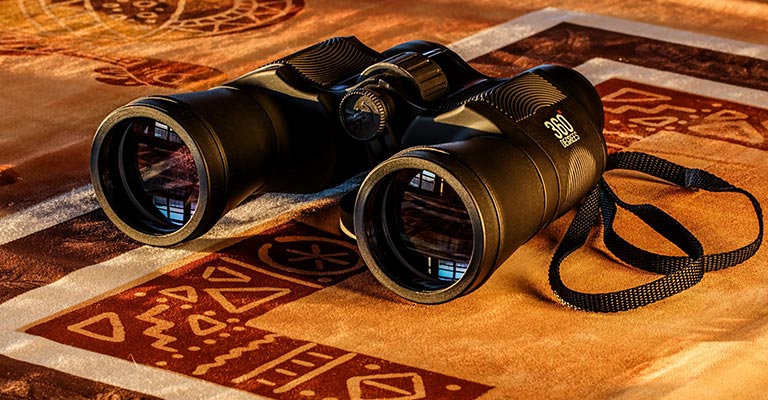
I’ve spent countless hours peering through binoculars, exploring the world in its intricate detail. Over the years, I’ve learned a thing or two about making smart buying decisions regarding these optical marvels. Want to make an informed purchase? Let me offer some insights.
Firstly, let’s talk about magnification. It’s easy to assume that bigger is better, but hold your horses! A larger magnification isn’t always practical.
Why so? With greater magnification comes a narrower field of view and a more noticeable handshake. A 7x to 10x magnifier for most outdoor activities will do just fine.
Next up is lens size. Larger lenses collect more light and provide brighter views, but naturally, they’re heavier, too. If you’ll be carrying them all day, consider something with a lens size of around 30mm – it’s a good balance between light intake and weight.
The type of prism used in binoculars plays a crucial role as well. There are two types: Porro prism and roof prism.
-
Porro prisms are cheaper and offer excellent depth perception.
-
Roof prisms are compact but slightly less bright due to their design.
Lastly, don’t forget about extra features like waterproofing or fog-proofing if you plan to use them in harsh conditions!
Conclusion
Choosing the right binoculars boils down to understanding your specific needs, preferences, and the conditions under which you’ll use them.
Start by identifying the primary purpose of the binoculars, be it bird watching, stargazing, or any outdoor activity, to determine the necessary specifications like magnification, lens size, and field of view.
Consider crucial factors such as eye relief for glasses wearers, prism types for image quality, and additional features like water resistance for durability.
Test different models for comfort and clarity, read reviews, and compare prices to ensure value for your investment.
By carefully evaluating these aspects, you can make an informed decision, selecting binoculars to enhance your viewing experiences for years.